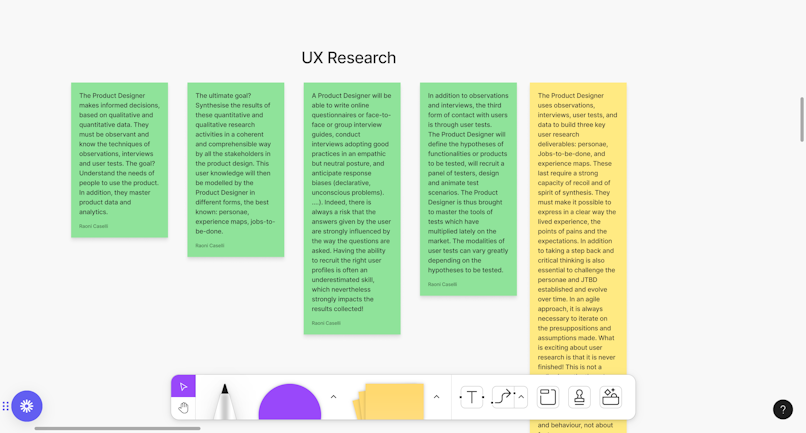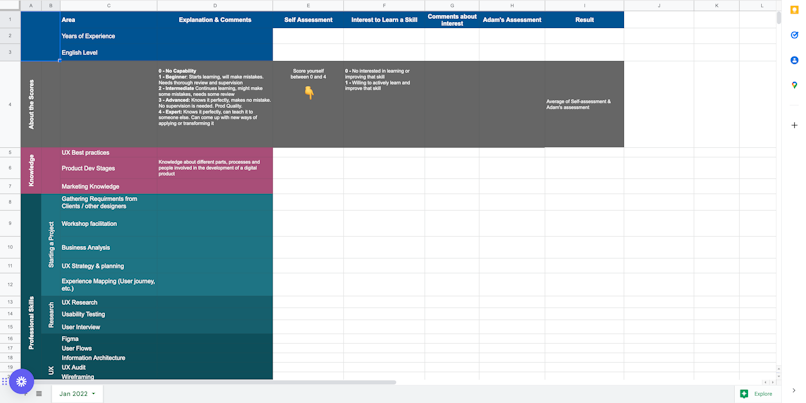Be honest, do you know all the skills new recruits possess? The answer is probably no. Most employers focus solely on the skills listed in the job description they are interviewing for. It’s understandable, right? You want to make sure they have the specific skills for the job. The issue is that this makes it almost impossible to track employee skills (and their progress) in your organization.
Here’s the good news. There is a pretty straightforward solution to this predicament: competency mapping. A competency map, also known as a skills profile, identifies the specific skills, behaviors, and knowledge needed for a particular job role, profession, or industry.
This article explores what a competency map is, how to build one, and how it benefits your business.
What is a Competency Map?
A competency map evaluates employees’ skills in a structured way. The idea is to build a repository of skills within the business and identify skills gaps. A competency map doesn’t just focus on hard skills. Instead, it covers a range of characteristics, knowledge, and traits spanning many different types of roles. Competency mapping allows organizations to define the expertise, knowledge, and interpersonal skills of every employee.
The organization begins by defining a list of relevant and valuable skills, known as a skills repository. Employees can then look through the repository, indicating which skills they possess.
Once data has been gathered during competency mapping, it is used by management, HR teams, and employees. From tracking teammates’ progress to hiring to determining seniority in teams, competency mapping serves many purposes. The data can be stored and shared in a number of ways. For instance, in a spreadsheet, deck of slides, or competency mapping software. All that matter is that the data is easy to read, share, and update.
Why do you need one?
There’s a reason why all good businesses need a competency map. In fact, there are several. Let’s start with the benefits of competency mapping for employees.
Employee benefits
Long-term personal development
A competency map shows employees that there is a long-term development plan in place. As such, employees can see the steps they need to take to reach different positions in the company. This helps them to manage their expectations. It also creates a clear metric for progress, based on transparent and universal criteria.
On a larger scale, when employees have a clear overview of the organization’s long-term plan, they tend to be more engaged in their work.
Improved learning and development opportunities
Employees value learning and development opportunities, especially on-the-job training. By having a competency map in place, employers can develop training programs that address the competencies needed to progress in the business. This benefits employees by giving them plenty of chances to develop their skills or cross-train.
According to LinkedIn’s 2019 Workplace Learning Report, 94% of employees would stay in a company longer if it invested in their learning. As a result, this one is a win-win. Employees get the training they crave and employers enjoy higher retention rates and a highly-skilled workforce.
Benefits for the employer
Better performance
The secret to building high-performing teams is understanding each team member’s competencies. Competency mapping allows you to track what skills each individual has so you can assign them to the right team. As a result, teams are more compatible, efficient, and satisfied at work. This leads to higher retention rates, fewer skills gaps, and well-rounded teams who perform better.
Improved hiring decisions
You’d be surprised at how often you are able to close skills gaps without additional hiring or training. When hiring and training teams are aware of the current competencies within the business, they can do their jobs more effectively. This may allow you to plug skills gaps via internal hiring or knowledge sharing.
Hiring the wrong person for your team can have a hugely negative impact on the business, your team, and the candidate in question. As such, competency mapping is an essential tool in optimizing the person-job fit. It maps the skills needed to perform the job, reducing the risk of making a bad hiring decision.
Transparent career paths
When it comes to hiring, candidates often want to know about the growth opportunities available to them. A competency map makes it much easier to present these career opportunities to new recruits while managing expectations. As a result, successful candidates enter the organization with a clear idea of where they are and how to get to the next level.
Align training with business objectives
Aligning training goals with organizational goals is a much simpler process with a competency map to guide you. Having a precise inventory of employee skills will ensure that employees enjoy relevant skills training that works towards overall business goals.
In short, a competency map helps you to gauge and track your teammates’ competencies and their progress. This is often used to measure seniority levels. Moreover, competency maps allow teammates to better negotiate their salaries, resulting in a fairer division of salaries.
How to create a Competency Map
We’ve seen the benefits, and now here’s how to build a competency map.
1. Outline the list of competencies
The first step in the process is to define the general sub-competencies within the field. At this stage, you are laying the groundwork. Therefore, it’s important to create a straightforward structure. For instance, you will want to create categories or groups for different competencies and group them together in the most logical way. Your system should be consistent and concise, so don’t overdo it.
The number of competencies in your map will vary depending on the size of your organization, but anywhere between 250 and 400 makes sense. These should then be divided into logical categories of around 20 competencies. Be sure to prioritize each competency depending on your company's needs.
2. Define all competencies
The next step is to carefully define each competency. This will avoid any confusion or potential misunderstandings. Each definition should describe the competencies, expertise, and knowledge for that job role or function.

Let’s say you’re creating a competency map for a product designer. The definition should focus on the relevant tasks, competencies, and goals associated with the role. Here’s an example.
3. Set up a level system for each competence
No matter what field you’re in, you will need to set up a level system for each competence. This allows you to determine current skills levels and future progress.

For context, we use the following expertise levels in our competency maps:
Novice
Beginner
Intermediate
Expert
4. Assess all team members
It’s now time to assess each and every team member. This should be a fair and democratic process.

Let’s say you’re assessing your team of UX designers. Start by having designers assess themselves. Then, have their manager assess them. The next step is to discuss any and all discrepancies to make sure that everyone is on the same page. Finally, document the final evaluation for future use.
5. Define the path forward
One of the major reasons behind building a competency map is to drive learning in your organization. With that in mind, after defining the skills, you should spend some time defining the competencies you’d like to improve. This forges a clear path forward based on your organizational needs and goals. In doing so, it will inform training decisions and empower teams to prioritize certain skills or knowledge.
Here are the criteria we use to prioritize skills at Adam Fard:
Interest
Company needs
6. Iterate
We hate to break it to you, but the hard work doesn’t stop once your competency map is in the field. The competency map is a living, breathing document that will evolve over time. So naturally, keeping it updated is a big deal. Like any good inventory, there should be regular updates and maintenance of the repository.
In the fast-paced world of business, the demand for skills is everchanging. To meet this challenge head-on, organizations should create spaces for employee feedback on competency mapping. For example, employees should have a channel for suggesting new skills or rating systems.
The competency map must then be integrated into the organization. It should become an integral part of management processes, training, hiring processes, and feedback cycles.
We’re big fans of iteration here at Adam Fard. That’s why we hold evaluations around every 3 months. That way, we track our progress and pivot when needed. On top of our quarterly evaluations, we have fortnightly checkups to touch base and see if there are any blockers.
Closing thoughts
There you have it. Competency mapping is the process of taking stock of the existing skills within your organization. This inventory can then be used to guide a range of business decisions, such as training initiatives, selection processes, and internal promotions.
A word of caution, though.
Creating a competency map isn’t a one-time thing. Think of your map as a living, breathing document. It needs to be updated regularly if it is to continue to be indispensable in ensuring growth within your team.





